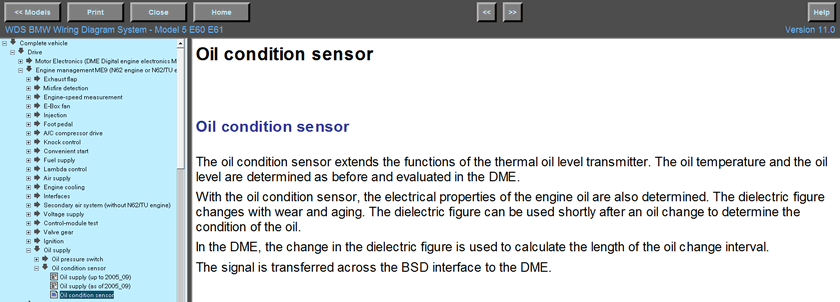Originally Posted By: Quattro Pete
Originally Posted By: small
BMW, MB, Porsche, et. al. are not doing oil analysis while you drive.
Actually, some time ago BMW has introduced a dielectric sensor that attempts to determine the condition of the oil while you drive. But as OVERKILL noted, it's just one of the parameters that gets taken into account when calculating OCI.
Not sure if it's still in use today. This is a few years old...
This is an excerpt from the N52 engine spec document published by BMW. They probably use something else for the N20 and N55 engines.
Fig. 46: Monitoring Electronic Oil Condition
Courtesy of BMW OF NORTH AMERICA, INC.
Function Of The Oil Condition Sensor
ENGINE - OVERVIEW - N52 -2006 BMW 330i Page 57 of 73
The sensor consists of two cylindrical capacitors arranged one above the other. The oil condition is determined by the lower, smaller capacitor (6). Two metal tubes (2 + 3), arranged one in the other, serve as the capacitor electrodes. The dielectric is the engine oil (4) between the electrodes. The electrical property of the engine oil changes as the wear or ageing increases and the fuel additives break down.
The capacitance of the capacitor (oil condition sensor) changes in line with the change in the electrical material properties of the engine oil (dielectric). This means that this capacitance value is processed in the evaluation electronics (7) integrated in the sensor to form a digital signal.
The digital sensor signal is transferred to the DME as an indication of the status of the engine oil. This actual value is used in the DME to calculate the next oil change service due. The engine oil level is determined in the upper part of the sensor (5). This part of the sensor is located at the same level as the oil in the oil pan. As the oil level drops (dielectric), the capacitance of the capacitor changes accordingly. The electronic circuitry in the sensor processes this capacitance value to form a digital signal and transfers the signal to the DME.
A platinum temperature sensor (9) is installed at the base of the oil condition sensor for the purpose of measuring the engine oil temperature. The engine oil level, engine oil temperature and engine oil condition are registered continuously as long as voltage is applied at terminal 15. The oil condition sensor is powered via terminal 87.



